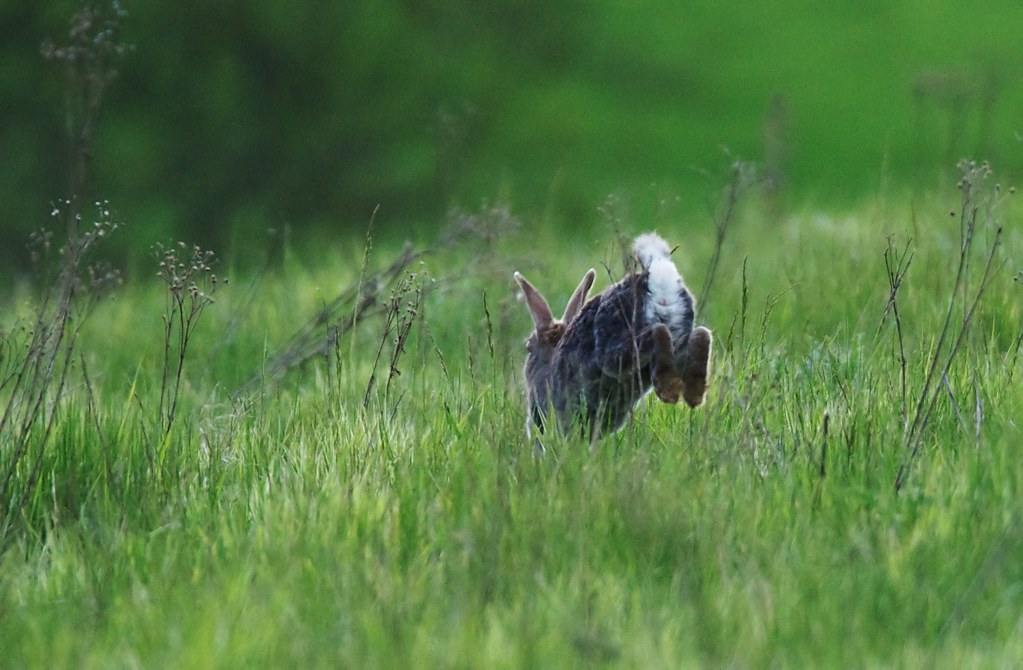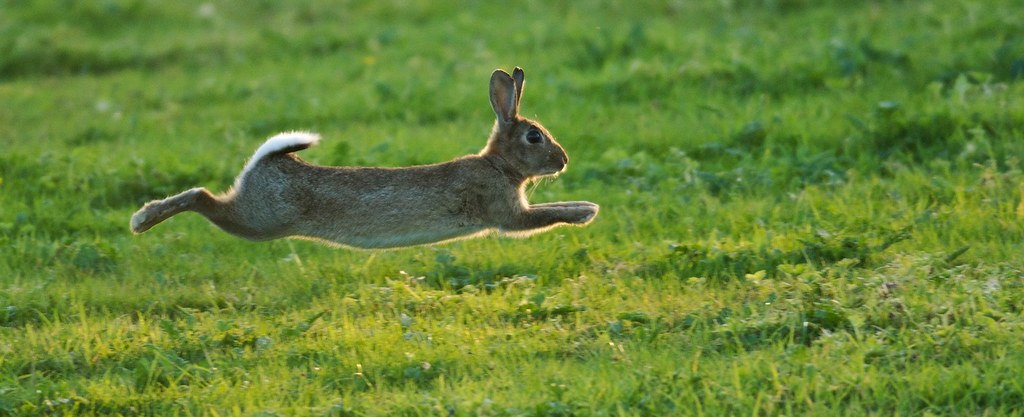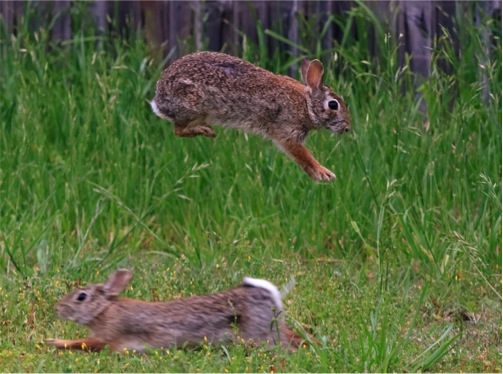BY KIERAN LINDSEY, PhD
On your mark…. Get set… HOP!
This morning, just in time for Easter, I saw my first Eastern Cottontail of the year. An article I read while eating breakfast had me thinking about track meets, and I’m sure that’s why I noticed, for the first time, how runners imitate the posture of a rabbit as they settle into their starting blocks. Human runners have to fold themselves up to gain the potential energy advantage of a crouching leg, but rabbits are always ready for the starting gun.
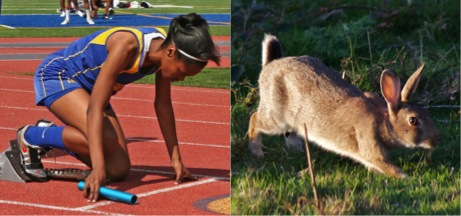
In 2009, Usain Bolt set a record of just over 23 mph in both the 100- and 200-meter, but he’s an exception, even among world-class athletes. It’s nothing out of the ordinary for Sylvilagus floridanus to reach speeds of 18 mph, and they can maintain that speed for close to 800 meters… while zig-zagging to change direction every few strides. Let’s see Bolt try that!
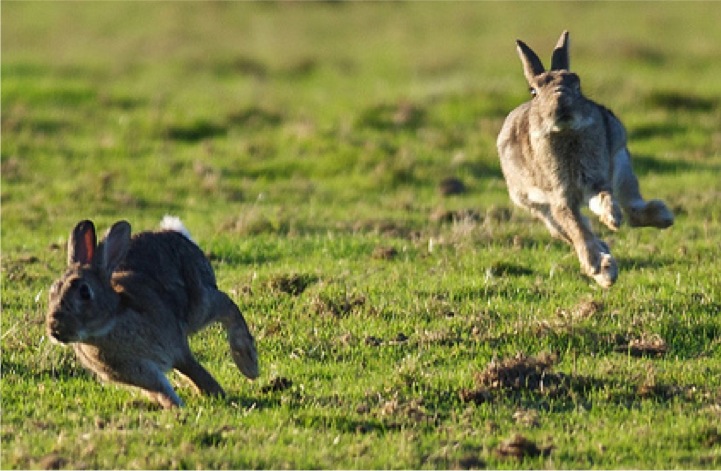
Most sprinters are specialists. But cottontails and other Lagomorphs (with the exception of pikas, Ochotona princeps) also excel at hurdles, steeplechase, and in other field events. Okay, they can’t throw a javelin or a shot-put, but they leap to the top of the score board when it comes to jumping.
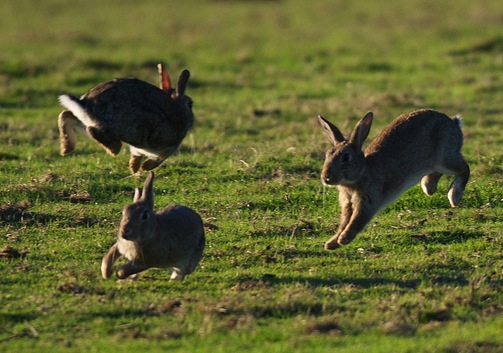
You want to see a long jump? At first, 4.8 m (15’) may not sound like much compared to the current world record of 8.95 m (29.4’). But consider this: a 15’ leap is 10x the average length of an adult cottontail’s body; 29 feet is barely 5x the average height of an adult American male.
How about the high jump? The men’s record stands at 2.45 m (8’), just 1.4x the average height of the jumper. While courting, both male (buck) and female (doe) cottontails will jump 0.6 m (2’), nearly twice their height, to demonstrate their worthiness to a potential partner. By that standard, not even elite human athletes would be able to find a mate.
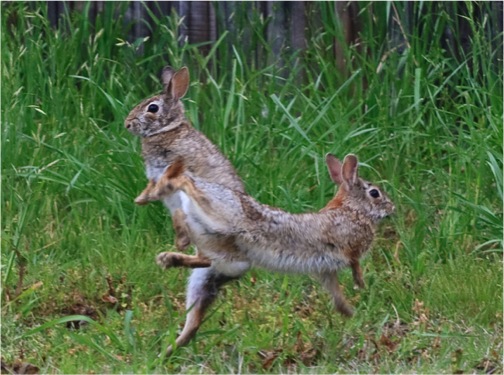
Once the mating ritual (which also includes a little boxing, just to keep things interesting) is complete, 1-12 kits are born approximately 28 days later. A doe will often mate again within hours of giving birth—what a woman! Admittedly, since she’ll only visit the nest to allow the young ones to nurse, she’s not going to win any “most attentive mother” awards.
But, to be fair, staying away keeps predators from getting wise to the location of the nest. It will take her 3 weeks to wean one set of youngsters, then she’s got about 1 week to recuperate before the stork arrives again.
Still not impressed? She may have up to 7 litters in a single year.
Now, I call that a marathon.
